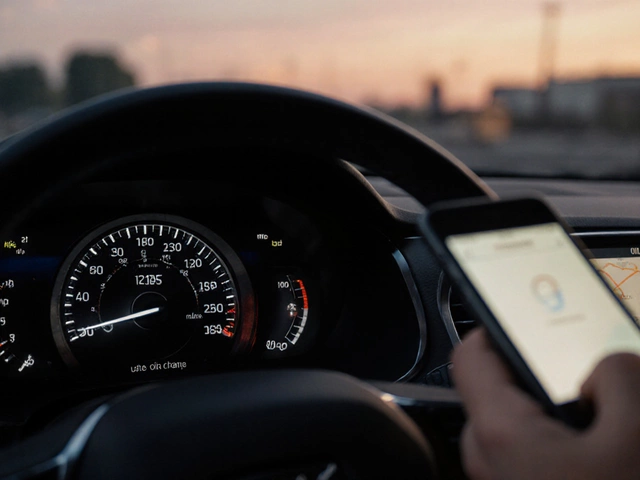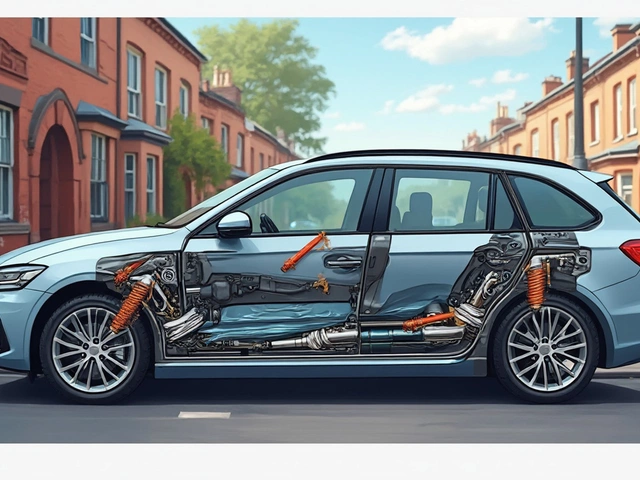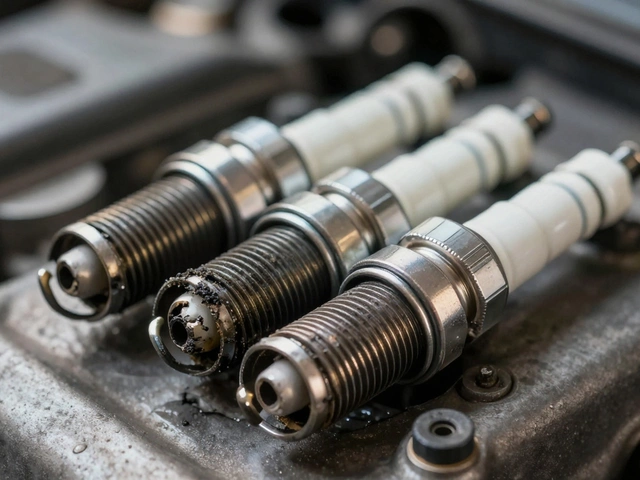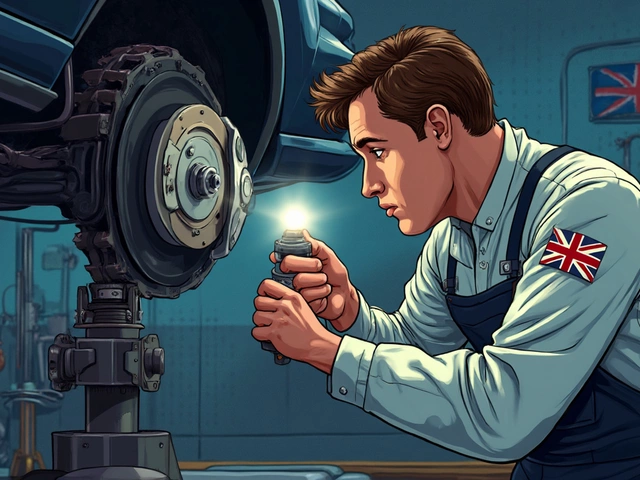You know how frustrating it is when your car just won't start, and you're not sure why. Many times, the culprit is a fuel pump that's acting up. But here's the thing: can a bad fuel pump still come on, or is it completely dead right away? Understanding this is like knowing whether your morning coffee maker has a real problem or just needs a push to start brewing.
Fuel pumps are crucial in keeping your car running, as they supply gasoline from the tank to the engine. But like most car parts, they can wear out over time. Sometimes, they'll still make a sound or sputter, but that doesn't mean they're doing their job right. So, if you’re hearing noises but still stuck in your driveway, there's a chance your fuel pump is failing but not entirely gone.
The fact is, fuel pumps can have intermittent issues, meaning they might work one minute and fail the next. This makes diagnosing the problem a bit tricky. Yet, there's no need to get anxious about it. We’ll guide you through the main symptoms of a failing fuel pump, how to test it, and a few tips to prevent pump problems from stranding you unexpectedly.
- Understanding How Fuel Pumps Work
- Symptoms of a Bad Fuel Pump
- Testing Your Fuel Pump
- Preventive Measures and Solutions
Understanding How Fuel Pumps Work
When it comes to your car’s heart, the fuel pump is the one making sure everything's ticking. Its main job? It gets fuel from the tank to the engine, ensuring your ride starts and keeps moving smoothly. Without it, you're literally going nowhere.
There are two primary types of fuel pumps: mechanical and electric. Mechanical fuel pumps, found in older cars, work by creating a vacuum that draws fuel through. They’re usually mounted on the engine. On the other hand, most modern cars use electric fuel pumps, which sit right inside or near the fuel tank. This positioning helps push fuel through easier, reducing the risk of vapor lock, a common issue in older systems.
Why Electric Over Mechanical?
Electric fuel pumps are the popular choice today due to their efficiency and reliability. They often vary in pressure according to the engine’s needs, helping save on fuel usage. Isn’t technology great?
How It All Flows
So, how does it all come together? Here’s a simple breakdown:
- The ignition starts the pump.
- The pump draws fuel from the tank.
- Fuel moves through a filter (cause nobody wants dirty fuel).
- Fuel travels up to the engine, maintaining the right pressure.
Sometimes, you might find a fuel pump relay in your vehicle. This little guy controls the power going to the fuel pump and can be a sneaky source of issues if it's not working right. Keep it in mind when you're dealing with fuel troubles.
Overall, understanding how these systems work might not make you a mechanic overnight, but it can sure help when you're troubleshooting fuel issues.
Symptoms of a Bad Fuel Pump
Figuring out if a fuel pump is on its way out isn't always obvious, but there are a few telltale signs that can clue you in. Let's break down some of the most common symptoms you should watch for.
Engine Sputtering
Imagine you're cruising down the highway, and out of nowhere, your engine starts to sputter. Does it feel like it's gasping for air or having hiccups? This could be because the fuel pump isn't delivering a steady stream of fuel to the engine, causing interruptions in performance.
Difficulty Starting
If your car struggles to start or requires multiple attempts to turn over, your vehicle issues might be related to a faulty fuel pump. When the pump doesn't build enough pressure, the engine won't get the fuel it needs to start smoothly.
Power Loss Under Stress
Do you notice your car losing power when climbing a hill or hauling heavy loads? This could indicate the fuel pump is unable to keep up with the engine's demand for more gasoline, resulting in sluggish performance during high-stress situations.
Strange Noises
A fuel pump that's about to fail often makes a whining noise. If you listen closely when you turn the key or while driving, a loud whine from the gas tank area is a red flag.
Poor Fuel Efficiency
Keeping an eye on your fuel efficiency is always a good idea. A bad pump might cause your car to use more gas than usual because it's not operating efficiently. If you find yourself at the pump more often, it’s worth checking the fuel pump.
| Symptom | Likelihood if Present |
|---|---|
| Engine Sputtering | High |
| Difficulty Starting | Medium |
| Power Loss | Medium |
| Strange Noises | High |
| Poor Fuel Efficiency | Low |
Noticing these symptoms early on and addressing them can save you from more severe problems down the road. So, stay alert and listen to your vehicle—it can actually "tell" you a lot if you're paying attention. If you're experiencing multiple issues, it might be time to get that fuel pump checked out or replaced.

Testing Your Fuel Pump
So, you're suspecting some trouble with your fuel pump, huh? Well, let’s roll up our sleeves and get down to figuring it out. Testing a fuel pump isn’t rocket science, but it does require a bit of attention to detail. You'll want to know whether your pump is still hanging in there or if it's time to shop around for a new one.
Listen for the Whirring Sound
A quick and easy test is to simply listen. Turn your ignition key to the 'on' position without starting the engine. You should hear a faint whirring sound coming from the gas tank area. If you hear it, the pump's mechanism is activating, though this doesn't guarantee it's working perfectly.
Fuel Pressure Tester
If you want to get a bit more technical, the next step involves checking fuel pressure. You can use a fuel pressure gauge, which you can pick up from most auto parts stores. Here's how:
- Locate the fuel rail on your car's engine and find the service port. You'll attach the fuel pressure gauge here.
- Once the gauge is connected, start the engine and check the reading. For most cars, you’re looking for a range between 30 and 40 psi but consult your car's manual for specifics.
- If the pressure is too low, your pump might be struggling. If it's zero, well, yikes, that means the pump isn’t delivering fuel at all.
Voltage Test
Another clever test is the voltage check. Grab a multimeter for this:
- Set the multimeter to measure voltage.
- With the ignition on, check the voltage at the fuel pump wiring connector. It should match your battery voltage, typically around 12 volts.
- If the voltage is correct but the pump isn't working, it's likely a pump issue. If no voltage, there's possibly an electrical problem.
Visual Inspection
Sometimes a simple visual check can reveal damage, like cracks or corrosion on the pump connections. Ensuring these are sound can sometimes solve the mystery right there.
Whatever tests you conduct, it's all about gathering enough info to make a call on whether the fuel pump needs replacing or if there's another issue in play. Getting proactive with these checks can save you a lot of hassle and keep you driving smoothly.
Preventive Measures and Solutions
When it comes to keeping your car humming, taking care of the fuel pump is a no-brainer. Like any car part, a little TLC can go a long way in preventing problems. Here are some straightforward tips to protect your fuel pump and keep your ride as reliable as ever.
Regular Maintenance Checks
Catch issues before they become big deals by scheduling regular maintenance for your vehicle. This includes checking the pump and related components like fuel filters and hoses. A clean filter ensures smooth fuel flow, reducing the strain on your pump and keeping everything running efficiently.
One auto expert once said, "A proactive approach to maintenance can save drivers the headache and cost of unforeseen repairs down the line."
Catching problems early is crucial because a replacement isn't cheap and being stranded is never fun.
Keep the Tank at Least a Quarter Full
Did you know driving with a near-empty tank might be hurting your fuel pump? Keeping your gas tank at least a quarter full helps the pump stay cool and prevents it from drawing in debris from the bottom. This simple habit could potentially extend your pump's life significantly.
Use Quality Fuel
Always opt for high-quality gasoline, as impurities in cheap fuel can lead to buildup that clogs your system and strains the pump. It might be tempting to go for the cheapest option, but a slightly higher cost today can prevent much greater expenses tomorrow.
Listen for Unusual Sounds
Sometimes, your car speaks to you—literally. Pay attention if you hear whining or other strange noises from around the fuel tank area. These noises can be early warning signs that your pump is starting to fail.
Inspect Connectors and Wiring
Don't forget about the electrical components that support your pump's operation. Ensure that all connectors and wiring are intact and free from corrosion. This helps maintain a strong electrical flow, essential for pump performance.
| Problem | Cost (Approx.) |
|---|---|
| Fuel Pump Replacement | $400 - $600 |
| Fuel Filter Replacement | $50 - $175 |
| Full Tank Flush | $150 - $250 |
By following these preventive measures, you're minimizing the likelihood of pump issues and saving yourself from unexpected breakdowns. And who doesn't want a smoother, hassle-free drive?






